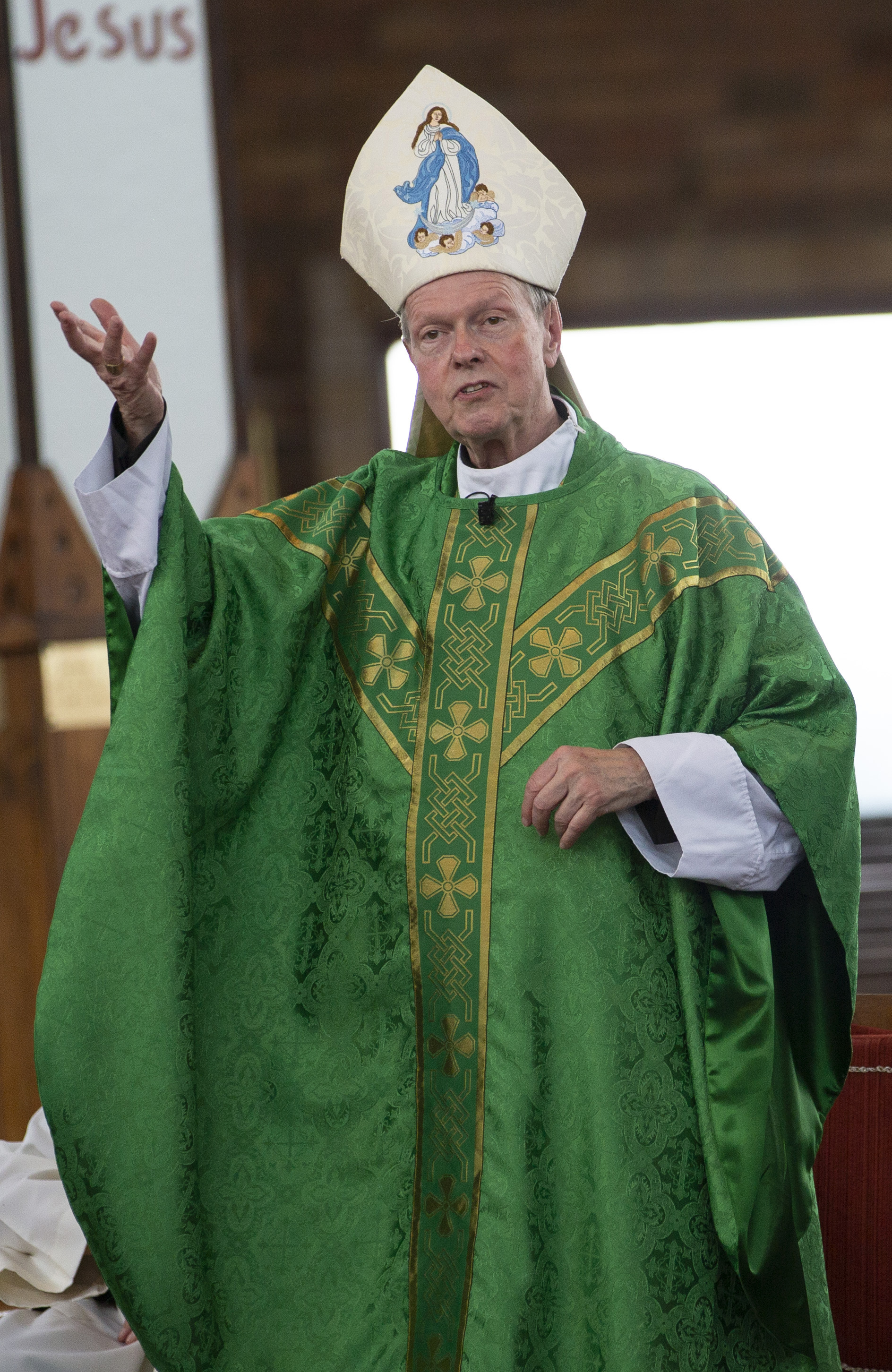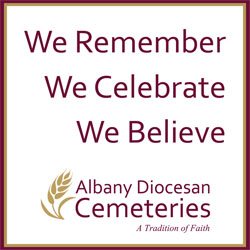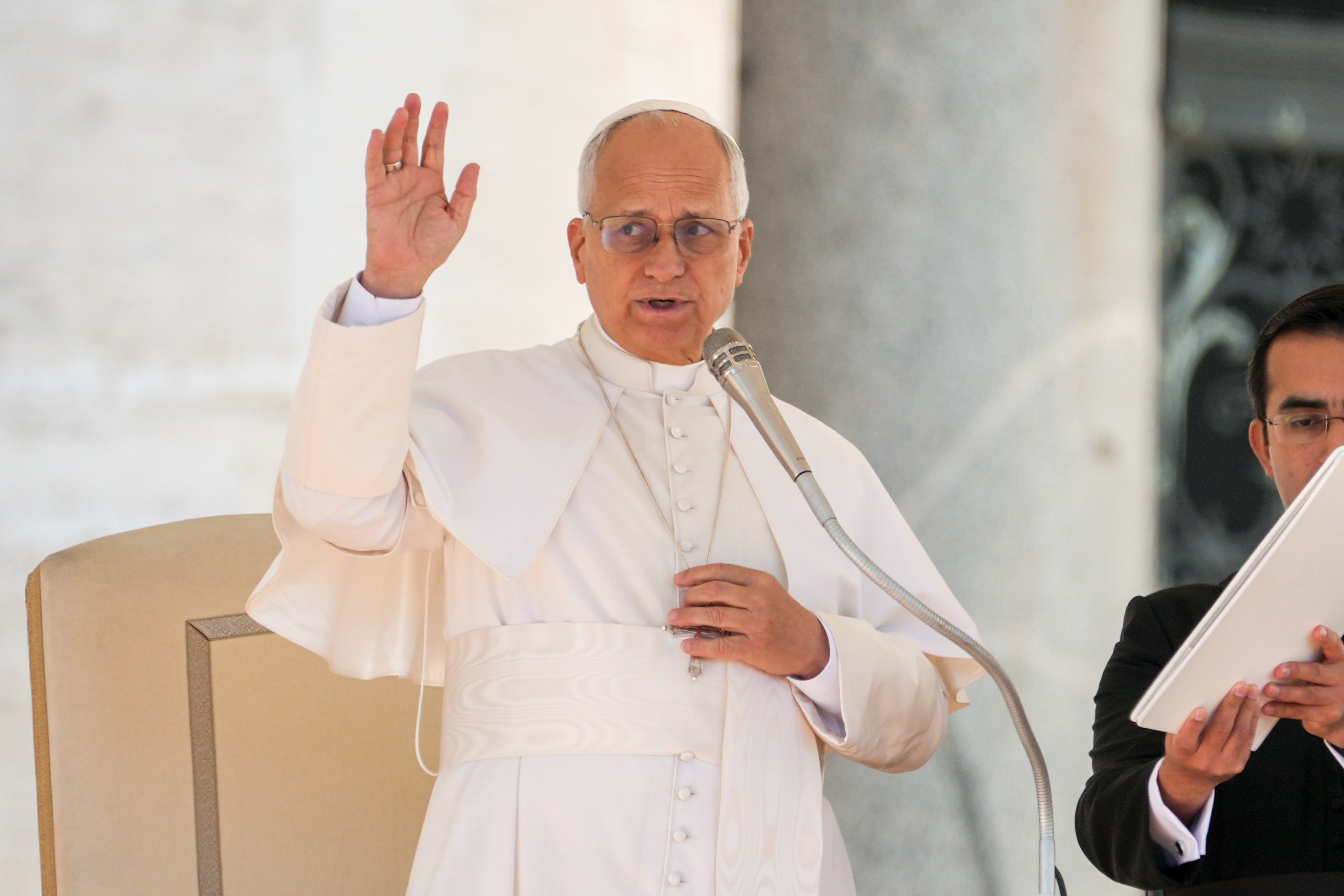August 21, 2018 at 7:22 p.m.
SEMINARIAN’S DIARY
A future priest practices homily-writing
During the summer, seminarians are placed in parishes throughout the Albany Diocese. Under the direction of our respective pastors, who supervise our “internship,” we learn and perform many of the functions we will undertake as priests.
At my summer assignment at St. Thomas the Apostle parish in Delmar, I gave vocation talks to a youth group, helped lead a Rosary and communion service for the elderly, and honed my writing and public speaking skills.
My capstone project was a reflection I delivered at Mass on the feast of the Assumption (Aug. 15), written under the guidance of Rev. David Berberian, pastor. The following is the text of my talk, which I’m sharing so readers can see how a man in formation develops the homily-writing skills essential for a priest.
“It is cliché at this point, in 2018, to begin a talk about our Blessed Mother with the words, ‘There’s something about Mary.’ It’s corny, campy and maybe worth a chuckle. But you know what? It’s the truth!
“Mary, the living tabernacle who carried Christ into this world, shares in our humanity in everything but sin, and shares with her Son everything but divinity. In fact, the number of Marian solemnities — solemnities are the highest-ranking feast days in our Roman Catholic Church — are second only to those dedicated to Jesus.
“Today, we celebrate one of these great gifts from God, revealed to us to increase our faith in His saving grace. Aug. 15 is the day we commemorate Mary’s Assumption, when she was assumed, body and soul, to reign as queen of heaven. It was Pope Pius XII who, on Nov. 1, 1950, officially declared Mary’s Assumption part of the deposit of faith, whose two sources are sacred Scripture and sacred tradition.
“Historians are always looking to place events in their proper context. The Catholic Church does not make decisions in a vacuum. Why, then, did Pope Pius officially declare the Assumption of Mary part of Catholic belief when he did, in 1950?
“Here is some historical context. The world had just emerged from the horrors of World War II, and Europe from the evils of Nazism. Yet, as the Nazi menace was being defeated by our ‘greatest generation,’ an equally malevolent force was sweeping across Eastern Europe.
“The Communist Red Army from the Soviet Union brought with it mass persecution of Christians. In Catholic countries — including Poland, Hungary and Czechoslovakia — seminaries, convents and monasteries were forcibly closed, parochial schools shut down and priests, nuns and bishops imprisoned or killed if they did not swear allegiance to the Communist governments directed by Moscow.
“The persecution of Christians by fascists and communists is the backdrop for the establishment of the Assumption. Pope Pius declared ‘that the Immaculate Mother of God, the ever-virgin Mary, having completed the course of her earthly life, was assumed body and soul into heavenly glory.’
“Mary and her Assumption were intended to give hope to the millions of Catholics living in Eastern Europe behind the Iron Curtain — women and men whose faith was being tested by persecution.
“Scriptural evidence for the Assumption is limited, but there are plenty of witnesses from sacred tradition. The feast has been celebrated for more than 1,600 years, and references to the Assumption can be found in councils from the early days of the Church. At one such council, it was testified that Mary died in the presence of the Apostles and that, when her tomb was opened at the request of St. Thomas, her body was no longer present. It had also been revealed to those present that she had been assumed into heaven.
“The Eastern Church has, since the sixth century, celebrated what they call the Dormition, or ‘the sleep of’ Mary. In the Western Church, there are references to Mary’s Assumption in liturgical documents dating from the eighth century forward.
“Logic can also play a role in our understanding of the Assumption. If we accept that Mary was the mother of God, immaculately conceived without the stain of sin, then why would God, in His infinite wisdom, allow the pure vessel which carried His divine Son to be subject to bodily decay? It seems illogical that He would permit corruption to come to what was incorruptible.
“This brings us to our most important question: How does Mary’s Assumption help us, the 21st-century followers of Christ, grow closer to Him? Pope Benedict XVI said the risen Mary is ‘a bodily realization of the promised salvation.’ We can view through her example a sneak preview of the glorious resurrected bodies we will assume when we come face to face with Jesus in heaven.
“However, Mary’s Assumption was simply the final chapter in the second-greatest biography ever written, the story of a woman who dedicated her life to the will of God. We need to study Mary’s life of perfect discipleship as a whole, learning what it means to be followers of Christ.
“From her consent to the incarnation, to her wonderful praise of God in the Magnificat, to her humble demonstration at Cana on how to petition her Son for help, to her presence at Calvary witnessing the excruciating pain suffered by Christ, to her central role among the disciples at Pentecost, Mary is the earthly model we as Catholic Christians should follow.
“The Church has honored her with many titles: Blessed Mother, Our Lady, Queen of Heaven, Star of the Sea and numerous others. Most importantly, she is the woman who brought the giver of everlasting life into the world. She literally delivered the Word-made-flesh into the story of mankind.
“Mary’s death was a perfect death, because she was brought in that instant into the light of Christ. Due to her closeness to the Father and the Son, she will be there for us in our time of need. To quote Pope Emeritus Benedict again, Mary ‘always listens to us, she is always close to us and, being mother of the Son, participates in the power of the Son and in His goodness.’
“The irreverent 1998 Hollywood comedy film got at least one thing right: There is indeed ‘something about Mary.’ It is something, on this holy solemnity, that we should think about, pray about and, above all, seek to imitate.”
(Mr. McHale is a native of Holy Trinity parish in Hudson/Germantown.)
- Dig deep and work patiently to keep church on solid foundation, pope says
- Portland archbishop on ICE: Human dignity comes from God, not government
- Christian hope shows the earth can resemble heaven, pope says
- Washington Roundup: Election shifts; Venezuela vote; transgender passports, and more
- Novel highlights power of art and music as a salve to troubled humanity
- Supreme Court sides with Trump administration to temporarily block full funding for SNAP
- Former diocesan fundraising director indicted on wire fraud for alleged 6-figure theft
- Love is key to church’s mental health ministry, says bishop who lost family to suicide
- Caring for creation is part of peacemaking, pope tells COP30
- Security for Syria’s religious minorities is disastrous, say religious freedom advocates








Comments:
You must login to comment.